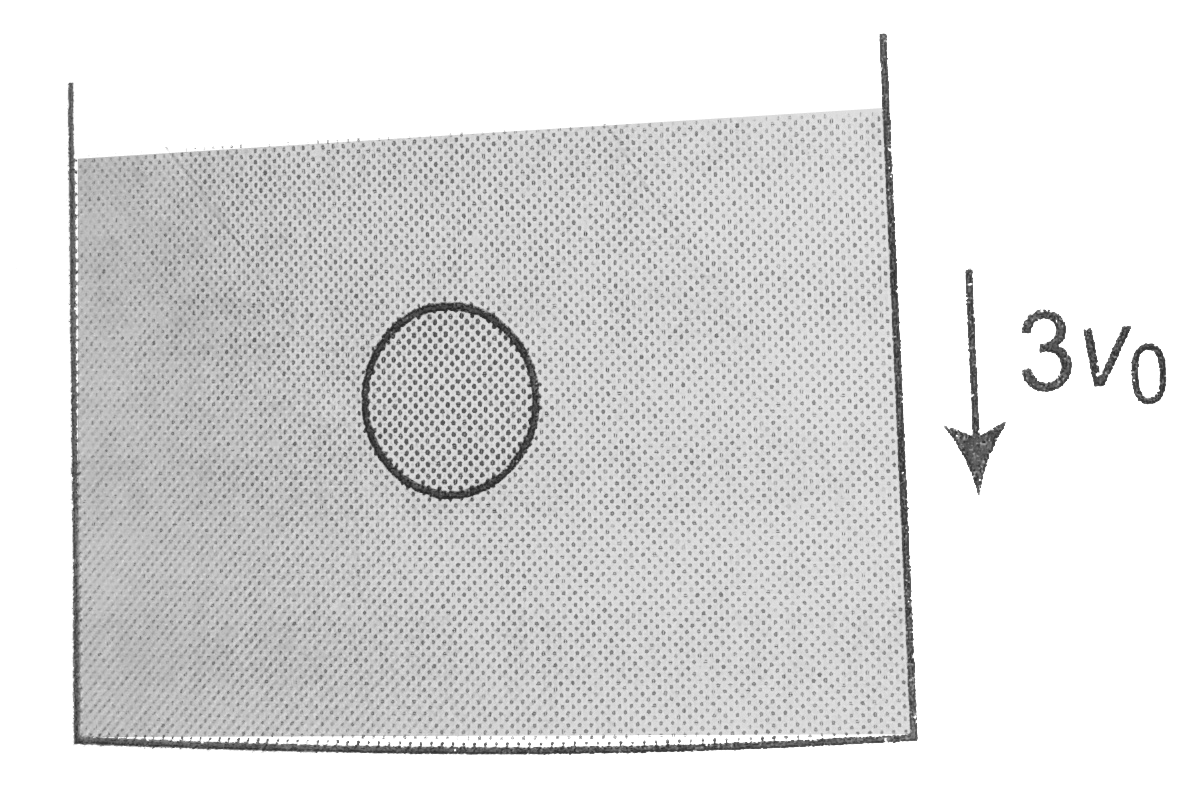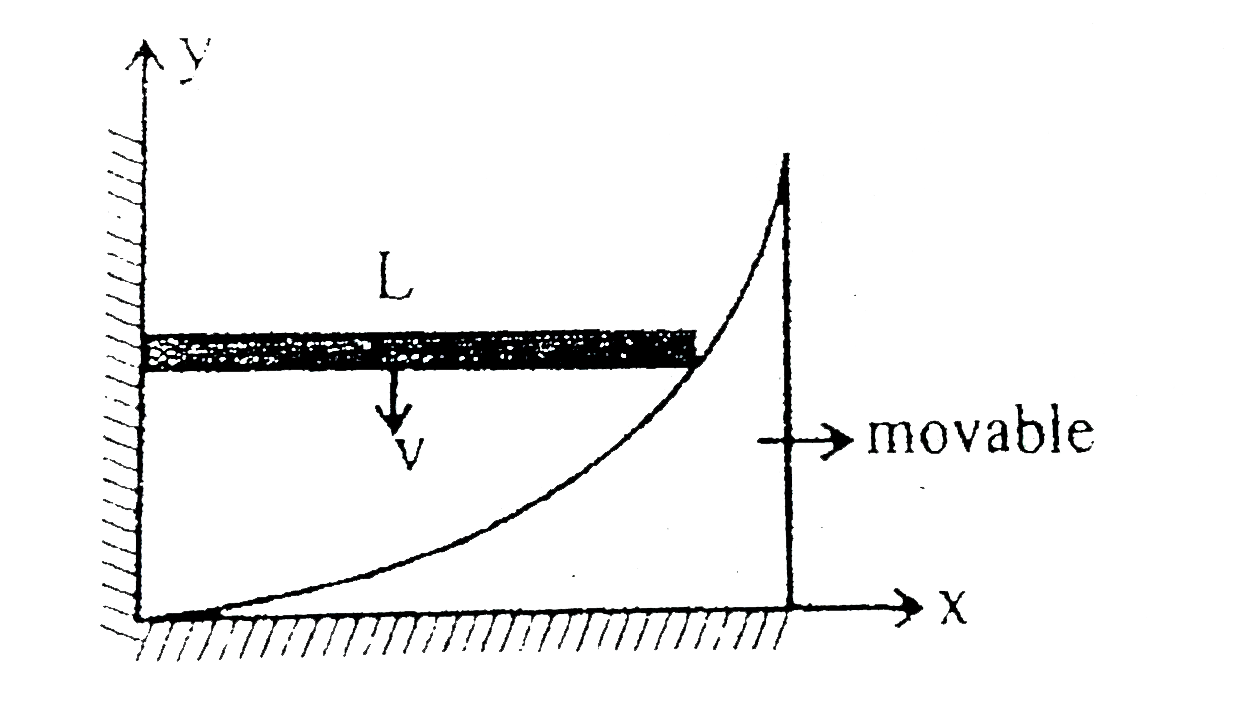
A container filled with viscous liquid is moving vertically downwards with constant speed . At the instant shown, a sphere of radius is moving vertically downwards (in liquid) has speed . The coefficient of viscosity is . There is no relative motion between the liquid and the container. Then at the shoen instant, The magnitude of viscous force acting on sphere is
The correct Answer is:B
Relative to liquid, the velocity of sphere is upwards.
Viscous force of sphere downward
downward
Topper's Solved these Questions
- PROPERTIES OF MATTERBook:A2ZChapter:PROPERTIES OF MATTERExercise:Problems Based On Mixed Concepts
Explore 34 Videos
- PROPERTIES OF MATTERBook:A2ZChapter:PROPERTIES OF MATTERExercise:Assertion Reasoning
Explore 20 Videos
- PROPERTIES OF MATTERBook:A2ZChapter:PROPERTIES OF MATTERExercise:Pressure Difference And Capillarity
Explore 23 Videos
- OSCILLATION AND SIMPLE HARMONIC MOTIONBook:A2ZChapter:OSCILLATION AND SIMPLE HARMONIC MOTIONExercise:Chapter Test
Explore 29 Videos
- ROTATIONAL DYNAMICSBook:A2ZChapter:ROTATIONAL DYNAMICSExercise:Chapter Test
Explore 29 Videos
Similar Questions
The viscous force Fv acting on a small ball of radius r moving in medium of coefficient of viscosity η with speed v is proportional to ηarbvc. Find the values of a, b and c.
View SolutionThe viscous force 'F' acting on a small sphere of rtadius 'r' moving with velocity v through the liquid is gib=ven by F= 6πnrv. Calculate the dimensions of n , the cofficent of viscosity.
View Solution
Knowledge Check
A rain drop radius 0.3mm falling vertically downwards in air has a terminal velocity of 1ms The viscosity of air is 18×10−5 poise. The viscous force on the drop is
A101.73×10−4deneB101.73×10−5dyneC16.95×10−5deneD16.95×10−4dyneA sphere of mass m and radius r is projected in a gravity free space with speed v. If coefficient of viscosity of the medium in which it moves is 16π , the distance travelled by the body before it stops is
Amv2rB2mvrCmvrDmv4rA small metal sphere of radius a is falling with a velocity υ through a vertical column of a viscous liquid. If the coefficient of viscosity of the liquid is η, then the sphere encounters an opposing force of
A6πηa2υB6ηυπaC6πηaυDπηυ6a3
A container having a liquid of density ρ is moving downwards with acceleration g2. Find the pressure difference between two vertical points in the liquid separated by h
View SolutionDefine terminal velocity. Show that the terminal velocity υ of a sphere of radius r, density ρ falling vertically through a viscous fluid of density σ and coefficient of viscosity η is given by υ=29(ρ−σ)r2gη Use this formula to explain the observed rise of air bubbles in a liquid.
View SolutionA rocket is moving vertically upward against gravity. Its mass at time t is m=m0−μt and it expels burnt fuel at a speed u vertically downward relative to the rocket. Derive the equation of motion of the rocket but do not solve it. Here, μ is constant.
View SolutionA sphere of radius R is gently dropped into liquid of viscosity η in a vertical uniform tube. It attains a terminal velocity v. Another sphere of radius 2 R when dropped into the same liquid, will attain its teriminal velocity.
View SolutionConsider a wedge rod system in which rod of length L is moving vertcially downwards without tilting with constant speed v. The sitatuin at t=0 is shown in the figure. The surface of the wedge is parabolic and has an equation y=x2. Find the speed of wedge at t=0. (Assume that the contact between the rod and wedge is not lost).

View Solution

